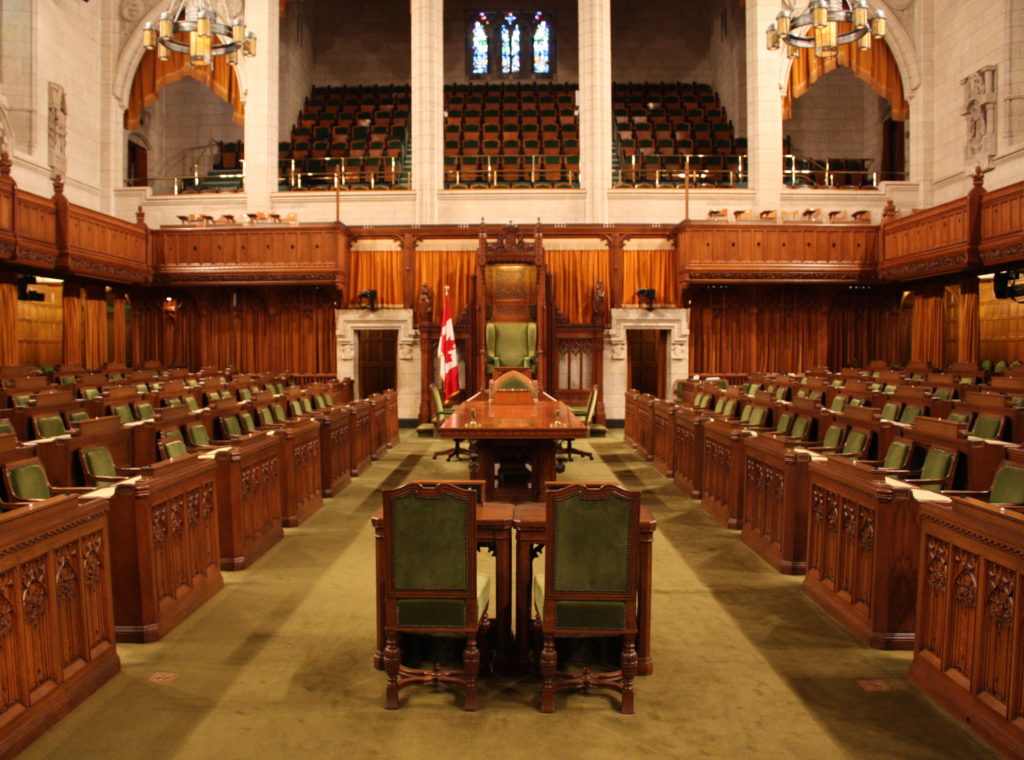Part 3: The Medium
3.2.1 Briefing Notes
Learning Objectives
- To explain the purpose and value of a briefing note.
- To describe the structure and characteristics of a good briefing note.

Briefing notes are a special type of written communication. They are a short document, usually one to three pages long, that informs a decision-maker, such as a government official, about an issue and, if applicable, possible actions they can take.
Imagine that you are the Minister of Health and you are about to walk into the Fall sitting of the House of Commons when you hear about disease X in the news. You just know the opposition is going to ask you about it and demand to know your response plan. Of course, you have no plan, because you just heard about it! But this is politics and you are going to look bad if you are not prepared. You ask your aides to do some digging…and fast! They come back with two documents, one is a peer-reviewed paper that looks scientific but is completely incomprehensible while the other is a briefing note written by a SPPH 552 graduate that clearly and concisely outlines the problem and potential solutions before making a recommendation. What would you do? Most likely, you will grab that briefing note and march into question period. This is a win for you, because it looks like your government is on top of the issue, but it is also a win for the risk and science communication graduate, because you have just decided on a course of action pretty much based entirely around the existence of the good briefing note.
This scenario is based on a true story…seriously! And one that repeats itself over and over again in cities, provinces, and countries around the world every single day. Most decision-makers deal with a vast array of issues that are constantly changing. It is impossible for them to independently research each and every issue in detail. For this reason, briefing notes are the information currency in the halls of most governments, and your ability to write good briefing notes will make a huge impact on your ability to translate your message into action.

A briefing note is a short (1-3 pages) and concise document that informs a decision-maker about an issue and often recommends an action. Concision is important and different than brevity – you need to use your language effectively to convey a large amount of information in a short space. A short but vague or ambiguous document will not be useful.
The briefing note also needs to be clear. Stay on point and keep your language and sentence structure simple. This is not Shakespeare! You should also think about organization and subheadings to ensure that it is readable. Remember that this is a document that will need to be read and understood on the fly.
Finally, it needs to be reliable. This means that all of the information presented should be both accurate and complete. You should clearly highlight any unknowns and anticipate questions that the decision-maker or opposition might ask.
There are many ways to write a briefing note but the key is to use the structure conventional to a particular institution and to adapt the style based on the issue and the decision-maker’s needs. For example, some briefing notes are just for the purpose of relaying information so they will not have a section with recommended actions. These types of briefs are common when there are major transitions in government and a new set of decision-makers needs to get up to speed but are not yet required to act.
However, the majority of briefing notes are concerned with decision-making and contain the following core components:
Purpose
Explain the purpose of the briefing note. All of the other sections should contribute to this central goal. This helps the decision-maker know exactly what to expect.
Background
This section gives the decision-maker exactly enough information to understand the rest of the briefing note. It might include basic information about the issue, previous decisions or events leading up to the current situation. The goal here is not to provide a detailed, chronological list of every single event related to the issue, but rather to provide key pieces of information needed to frame the next section.
Current status
We like to think of this section as setting up the chessboard for the decision-maker. What is the current landscape of the issue? Who is involved? What is happening? Why is a decision needed?
Options
In continuing with the chess analogy, this section explains the potential ‘moves’ the decision-maker could make and the pros and cons of each.
Key considerations
This section includes information that the decision-maker will need to arrive at the decision. The considerations will depend largely on the context and issue. These could include the dominant, competing perspectives on an issue, potential consequences of action or inaction and anticipated political or social gains or fall outs. This is sort of like anticipating how the game could play out.
Recommendation
This section summarizes what you want the decision-maker to take away from the briefing note. What move should they make? It should not include anything new but should almost stand alone, as many decision-makers skip right to this part without reading the rest of the document. Your recommendation should be concrete, reasonable, and achievable in the current sociopolitical context. At its best, this section provides a compelling piece of wisdom that is both evocative and memorable.
Discussion
Questions to ask yourself when writing a briefing note:
- Why has this note been requested? Why is the Minister dealing with this now?
- Given the purpose, context and scenario, what exactly does the Minister really need to know? What is the strategy?
- Have I identified the various actors or issues or options; outlined the stated and unstated agendas, and captured the strategic considerations?
- What is the bottom line? Have I identified or positioned ‘the goods’ right up front in the note?
- Where are the pitfalls for the Minister? What is missing? What else is missing? Who else should I be talking to, obtaining intelligence from or consulting with?
- Would I be confident walking into this event/meeting with this note as my script?
- Is the level of detail I am providing appropriate to the subject and situation at this time? Is every word and paragraph essential? What can I edit out?

Appreciate the political context. If you are going to write for politicians, you need to put some effort into understanding the political context that you are dealing with. This is a spectrum for which you need to meet a minimal threshold of savviness. For example, it is a very bad idea to recommend a decision that the decision-maker does not even have the power or jurisdiction to undertake. Once you meet that threshold, the further you go, the more icing you will add to your cake. For example, if you can warn of an opposing viewpoint that the decision-maker is not even aware of yet and save that decision-maker from an embarrassing public spectacle, or if you can produce a new and innovative solution that is cost efficient and well received by voters, then you will forever be seen as a valuable and trusted source of information.
Spend time and effort producing clear, high quality prose
It may be tempting to rely on bullet points but this can result in a document that reads more like a glorified outline. Bullets may be appropriate in some scenarios but should never be used as a substitute for good writing.
Revise, revise, revise
Think of this as a high-stakes elevator pitch. It needs to be powerful but also very easy to digest so that the focus is the message and not the document itself. This is very hard to do and requires a lot of practice. Commit to doing a number of revisions.
Create talking points
These can be integrated within the briefing note or pulled out into a separate section. Talking points are key phrases composed in a simple, direct, and ‘punchy’ language. They are not meant to be read like a speech, but rather to be incorporated into the decision-makers’ own language and messaging. It is a good idea to add talking points when you think the decision-maker will need to speak publicly about the issue in question.

Takeaway Tweet
“Writing a good briefing note for a policy maker is like harnessing your inner Yoda. You must be short, insightful, and informative. The policy maker is your ‘Luke’ and you are the guide- show them what was, what is, and what can be.”
– Gabrielle Hadly
Key Takeaways
- Briefing notes are short documents prepared for decision-makers that present key information and considerations for action relating to a particular issue.
- A good briefing note is short, concise, clear, readable and reliable. They should follow a set structure and meet the needs of the decision-maker who will be receiving it.
Briefing note for Vancouver City councilors to provide recommendations on the potential extension of pop-up plazas in Vancouver beyond COVID-19. by Claire Styffe
Briefing note for Dr. Peter Berman, Director, UBC SPPH to present action item for how SPPH can respond to protect its students from Computer Vision Syndrome (CVS). by Angela Czarina Mejia
Briefing note for the BC Minister of Health to provide the Minister with options to improve BC celiac disease patients’ access to labwork for identifying nutrient deficiencies. by Yinghong (Amy) Wu
Briefing note for the BC Provincial Medical Services Comission to provide up-to-date information on lipoprotein(a) as a cardiovascular risk factor and a recommendation to address this risk in the population. Prepared by Sean Sinden
Media Attributions
- The chamber of the House of Commons adapted by Makaristos is licensed under a Public Domain license
- Parliament of Canada © James Beheshti is licensed under a CC0 (Creative Commons Zero) license

